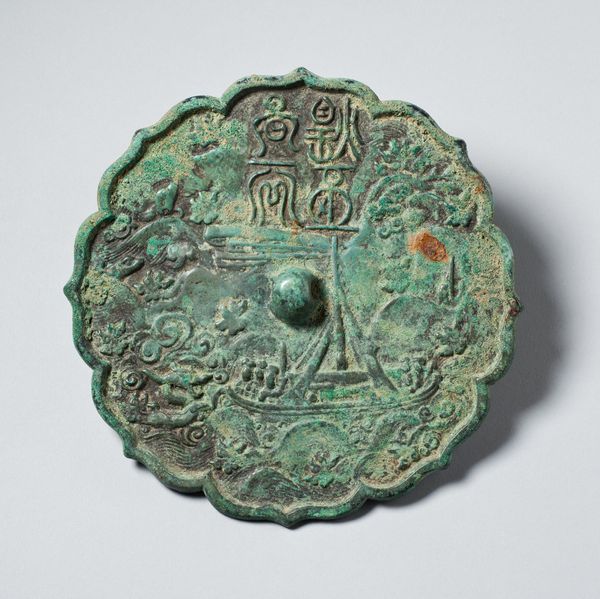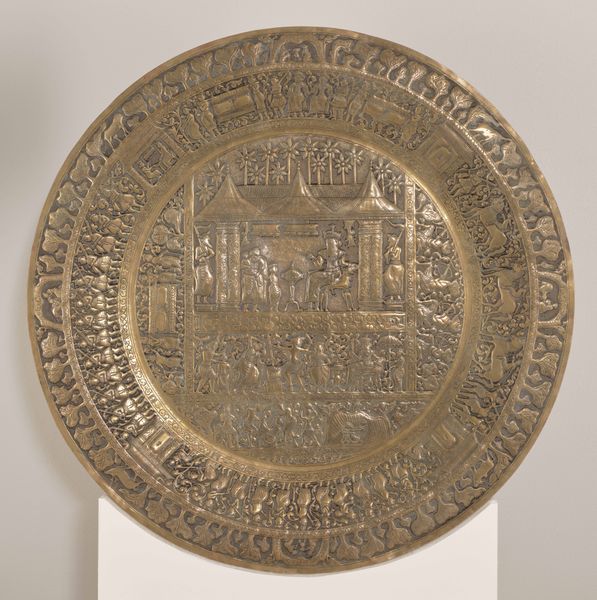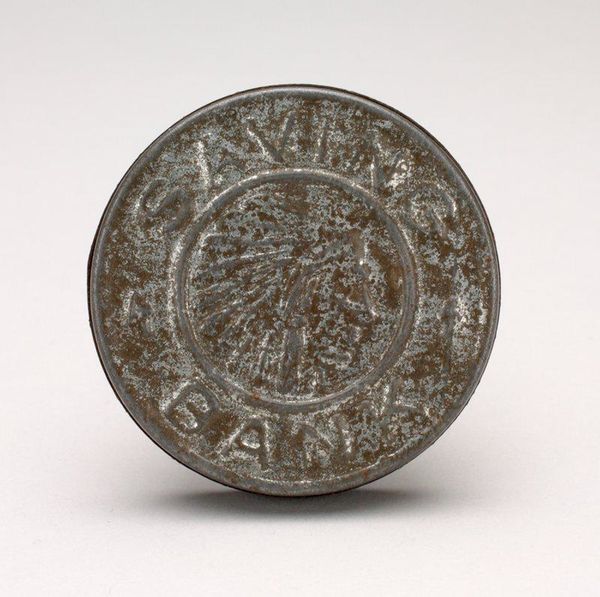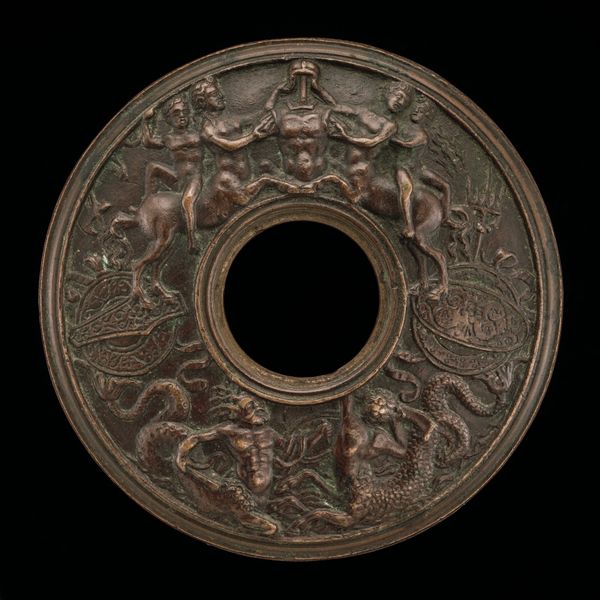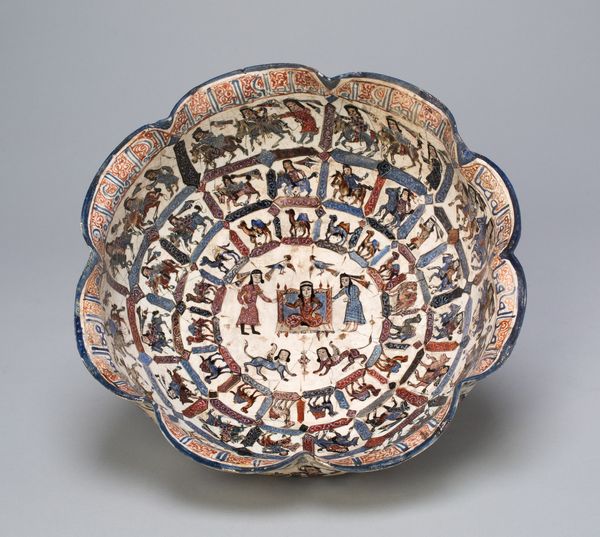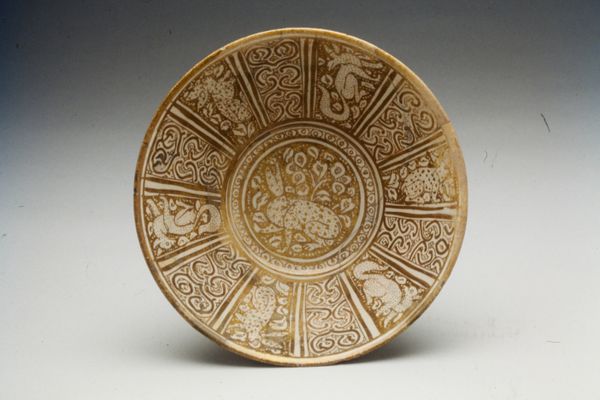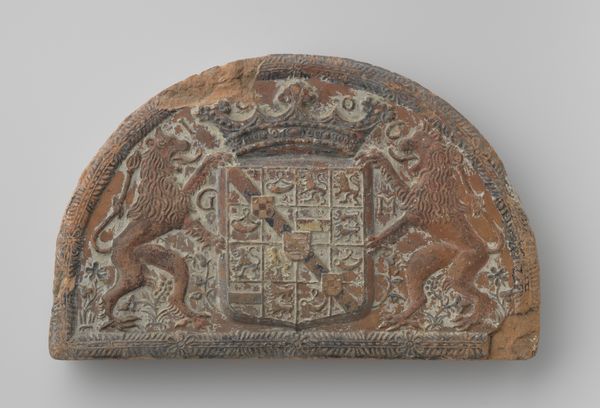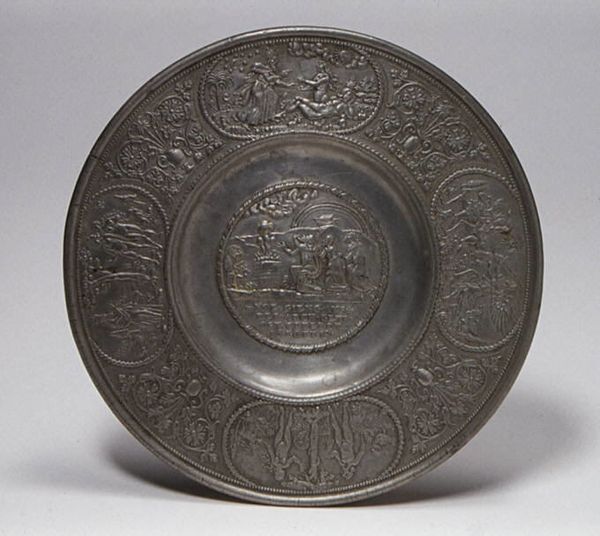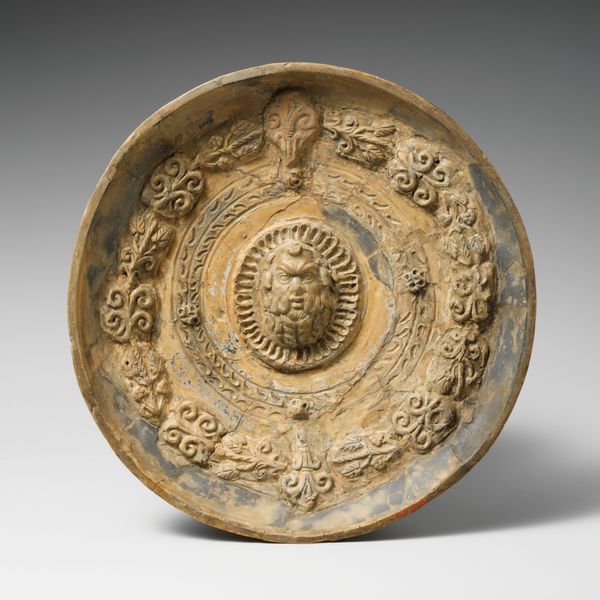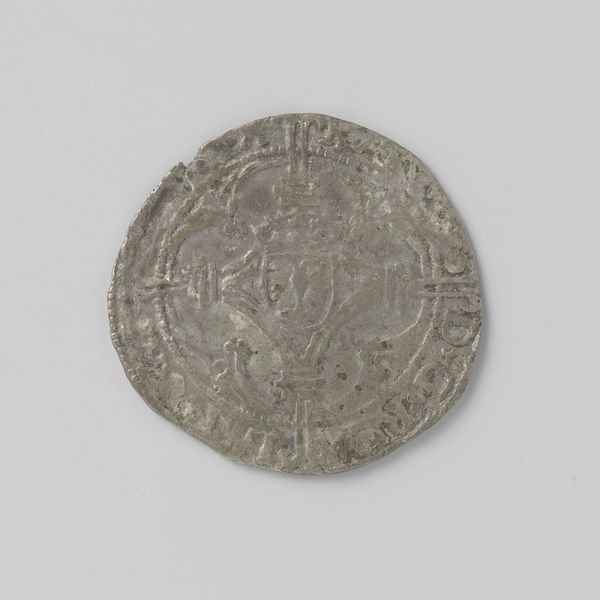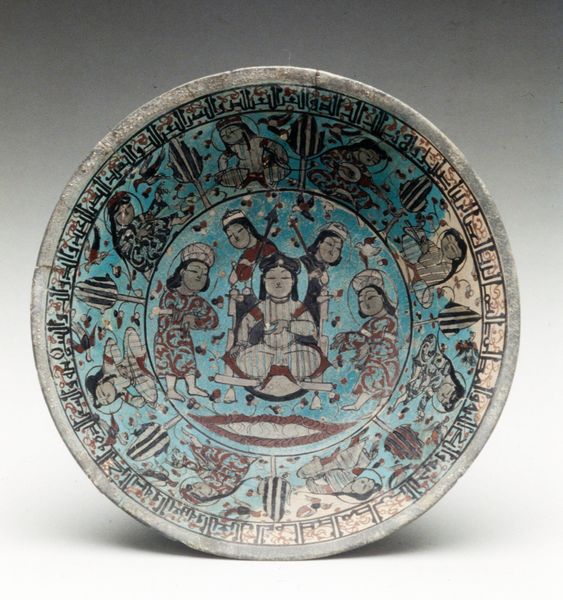
relief, bronze, sculpture
#
medieval
#
asian-art
#
relief
#
bronze
#
geometric
#
sculpture
#
decorative-art
Dimensions: 5/16 × 6 7/8 × 7 in. (0.79 × 17.46 × 17.78 cm)
Copyright: Public Domain
This bronze mirror, of unknown origin and date, is a fascinating microcosm of cosmological symbols. Concentric bands teem with creatures and characters, each a vessel of ancient beliefs and cultural narratives. Observe the animals arranged in a circle. In the East, this is reminiscent of the Zodiac, and here it suggests the cyclical nature of time and existence, a theme that echoes across cultures. Consider the serpent, often a symbol of transformation and rebirth. In ancient Greece, it adorned the staff of Asclepius, embodying healing, while in other traditions, it represents primal chaos or knowledge. Note how the mirror itself functions as a symbolic threshold, reflecting not only our physical image but also the collective memory embedded in these motifs. These symbols are not static; they evolve, adapt, and resurface, engaging our subconscious with their enduring power. This mirror is more than just an object; it’s a portal connecting us to the past and to the ongoing journey of symbols through time.
Comments
minneapolisinstituteofart almost 2 years ago
⋮
This mirror is a veritable map of the Korean cosmos with a central celestial frog surrounded by the divine animals of the four directions—the White Tiger of the West, Black Tortoise of the North, Azure Dragon of the East, and Vermillion Phoenix of the South. Successively larger bands depict the eight trigrams, the ten heavenly stems and twelve earthly branches, the twenty-eight lunar mansions, and the twenty-four solar terms. Finely cast bronze mirrors like this one were a standard luxury good among aristocratic men and women in early Korea. The fronts of the mirrors were polished to achieve a reflective surface, while the backs were cast in decorative relief and organized around a central domed eyelet to accommodate a cord. As magical solar disks, they were also frequently placed in tombs in the belief that they could illuminate the darkness.
Join the conversation
Join millions of artists and users on Artera today and experience the ultimate creative platform.
